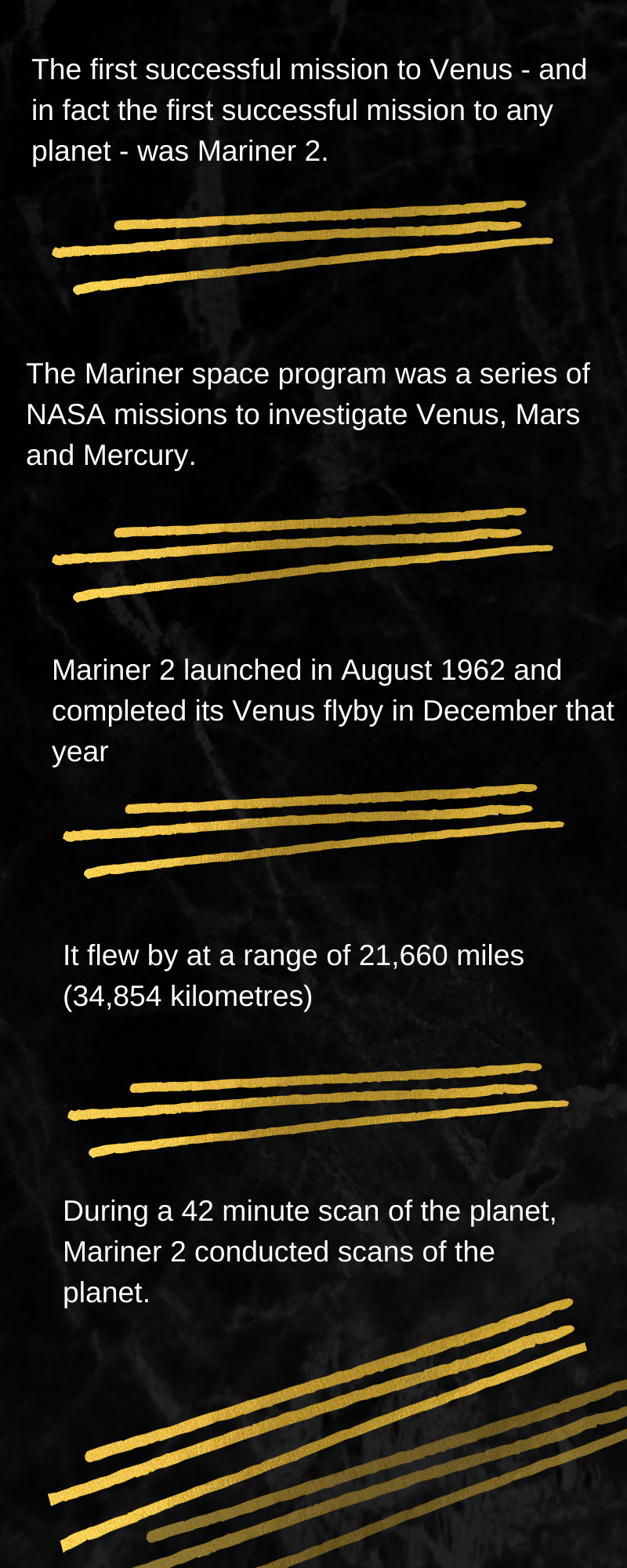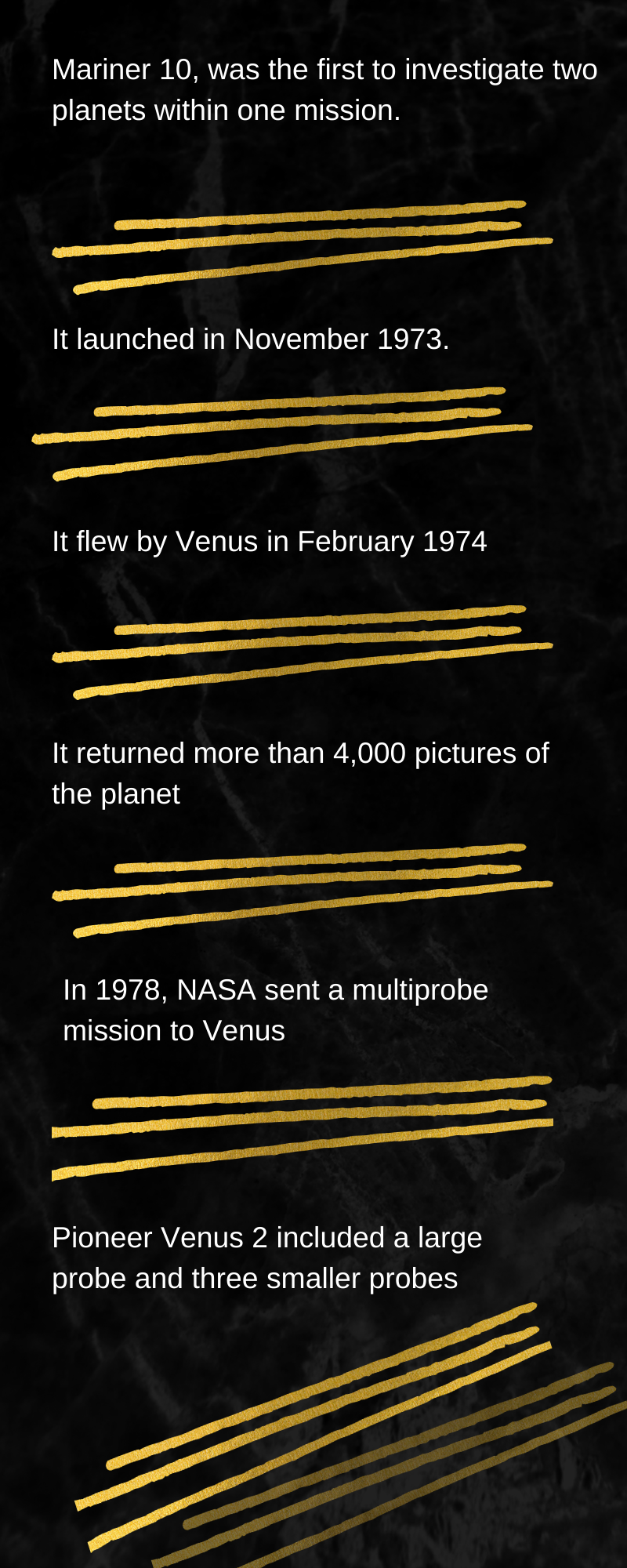NASA's Pioneer 5 space probe was originally intended to go to Venus. Technical difficulties meant the mission was changed to instead investigate the interplanetary space between Earth and Venus. It launched in March 1960. Pioneer 5 provided the first map of the interplanetary magnetic field.


- The first successful mission to Venus - and in fact the first successful mission to any planet - was Mariner 2.
- The Mariner space program was a series of NASA missions to investigate Venus, Mars and Mercury.
- Mariner 2 launched in August 1962 and completed its Venus flyby in December that year.
- It flew by at a range of 21,660 miles (34,854 kilometres).
- During a 42 minute scan of the planet, Mariner 2 conducted scans of the planet.
- The data it collected indicated no significant difference in temperature across Venus. Readings showed temperatures of 421 degrees Fahrenheit (216 degrees Celsius) on the dark side to 459 degrees Fahrenheit (237 degrees Celsius) on the dayside.
- Mariner 2 also found that there was a dense cloud layer that extended from 35 to 50 miles (56 to 80 kilometres) above the surface.
- The final launch in the series, Mariner 10, was the first to investigate two planets within one mission.
- It launched in November 1973.
- It flew by Venus in February 1974.
- It returned more than 4,000 pictures of the planet as well as other important data before using Venusian gravity to change its course and head to Mercury for the rest of its mission.
- In 1978, NASA sent a multiprobe mission to Venus.
- Pioneer Venus 2 included a large probe and three smaller probes.
- The Large Probe was released while about 7 million miles (11.1 million kilometers) from the planet.
- Four days later, the bus released the three small probes—the North Probe, Day Probe, and the Night Probe—while about 6 million miles (9.3 million kilometers) from Venus.
- They each opened their instrument doors at altitudes of about 43.5 miles (70 kilometers) and began to transmit information about the Venusian atmosphere immediately.
Each probe took about 53 to 56 minutes to reach the surface. Two of the three small probes survived the hard impact. The so-called Day Probe transmitted data from the surface for 67 minutes, 37 seconds, before succumbing to the high temperatures, pressures, and power depletion. Information from its nephelometer indicated that dust raised from its impact took several minutes to settle back to the ground.
Data from the probes indicated that between about 6 and 31 miles (10 and 50 kilometers) there is almost no convection in the atmosphere of Venus. Below a haze layer at about 19 miles (30 kilometres), the atmosphere is relatively clear.
- In November 2005, the European Space Agency launched Venus Express, a probe designed to explore the hot, dense atmosphere of Venus.
- It was ESA's first Venus exploration mission.
- It relayed information back to ESA until December 2014 when it is believed to have run out of fuel.
- Now, astronomers looking at the atmosphere in Venus see something that might be the signal of life.
- They found the chemical signature of a noxious gas called phosphine. On Earth, the only way phosphine exists is with life.
- The authors of a study published in the journal Nature Astronomy Monday (14 September 2020) say it is far from proof, but it is a tantalizing signal that they can't explain away as anything but life.
- It could hint that there may be bizarre microbes living in the sulfuric-acid-laden clouds of the hothouse planet.
- Phosphine can be made in industrial processes and has even been used as a chemical warfare agent.
- It's also found in the bottom of ponds, in badger guts and penguin guano.
- Astronomers tried to figure out other, nonbiological is needed, several outside scientists said.
Also Read: NASA's Chandra X-ray Observatory opens treasure trove of cosmic delights
(AP, NASA TV, ESA)



